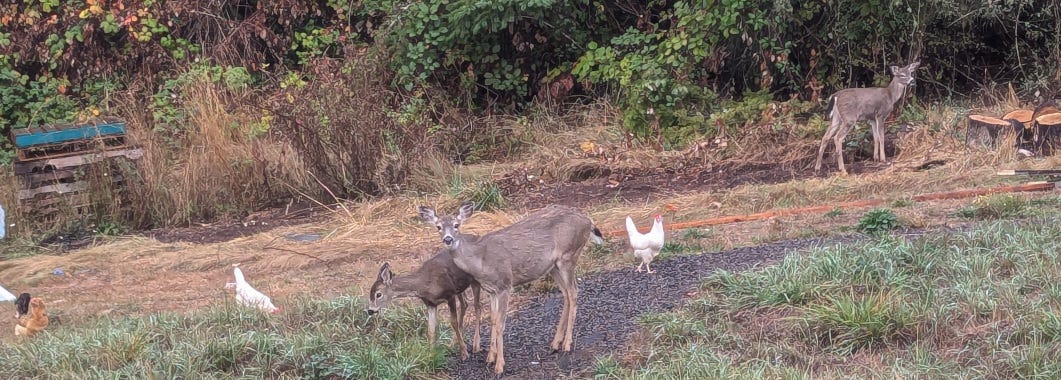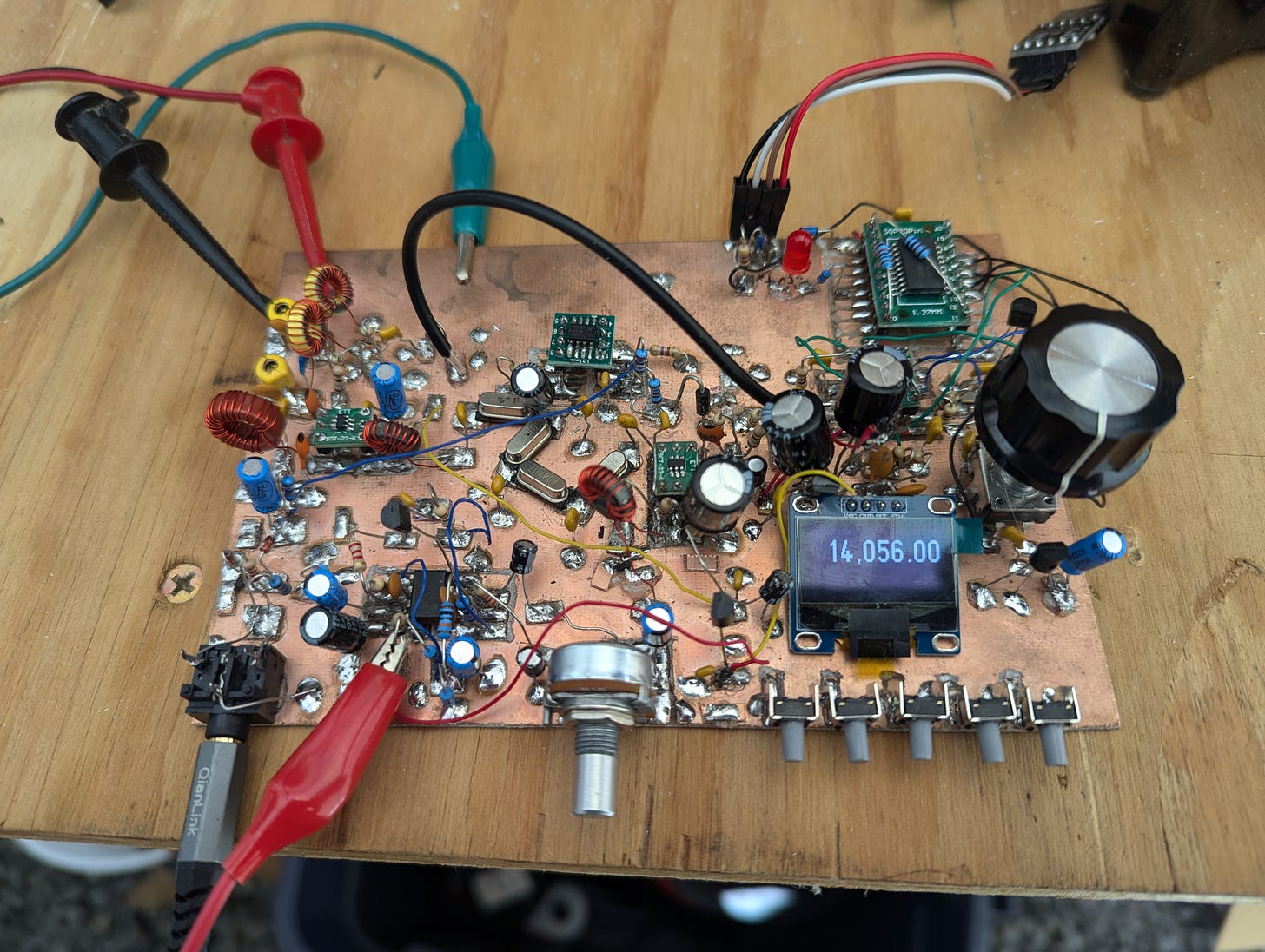As Project Yamhill nears actual physical implementation, it’s time to start building some more real-time, two-way communication. We’re starting to get some beta testing and discussions going! If you’d like to participate in Project Yamhill chat, please click on the link below. Thank you!
The seasons have certainly turned here in Oregon wine country. The rain has really started in and you can feel that crispness in the air. Fortunately, I’ve completed most of the work around here that I needed to get done before the weather seasonally changed, including getting the roof complete on my new office ADU.
Unfortunately, things are still a little uncertain with my new job, so I haven’t had as much time as I would have would for radio work. I’m trying to get as much work as I can, in order to make up for the time that I missed out on between jobs. I’m hoping that I can get into a stable equilibrium and routine that will allow me to get back to putting in as much time during the week that I was previously investing in my Etherkit endeavors, but I’m not there yet. With that being said, I have been moving forward to some degree, so I wanted to at least give you an update about what I’ve been working on.
Unnamed MAX2861 Transceiver Development
As I mentioned in my last post, I’ve decided to make a strong push to finish a QRP CW transceiver using the MAX2681 active mixer. I’ve had the desire for a long time to do a project like this (probably a decade) but so many things have sidelined the project. Since I still need to fully develop some of the circuit blocks for Project Yamhill, I chose to put my energies into finishing this transceiver so that I can get it off of my bucket list, have a flagship product that I can sell once I relaunch my web store, and have design work that will inform the further refinement of Project Yamhill.
Since my last update, I’ve added the LO/BFO system and the brains of the transceiver directly onto the copper clad, replacing the outboard LO/BFO that I was temporarily using in order to test the core receiver functionality. The LO/BFO is a Si5351A with a TCXO ref osc, natch. I decided to chose something different than my usual fare for the microcontroller this time, opting for an ATtiny3226 using the megaTinyCore board support package for Arduino IDE. This chip has a decent amount of flash memory, RAM, and I/O considering it costs just a bit over $1. For the display, I went with a commodity 128 x 64 pixel OLED module with I2C interface.
Well, the Si5351A and the ATtiny3226 worked great, but integrating the OLED display caused some big problems. It introduced two really awful, yet different types of audio interference in the receiver. First, there was a nasty buzzsaw like hum, and then there was also a staccato ticking noise overlaid on that. I know that these types of displays have been used in other radios, so I was confident that there had to be some way around the problem.
I conferred with some of the fine members of the Etherkit chat room on my Element instance, and the consensus was that the likely culprit was the switching PSU integrated onto the display module. In doing my own research, it seemed like another potential cause of my problem was not using decoupling with a large bulk capacitance on the VCC line, since OLEDs tend to have very sharp di/dt characteristics as the display is updated, as the current consumption of the module changes based on whether a pixel is illuminated or not (as compared to your standard 16 x 2 character LCD, which has relatively stable current draw no matter what is on the display).
This all made sense, so I decided to try the decoupling network first, since that was a pretty simple revision. After trying a few different resistor values (trending towards the largest I could get away with, without dropping too much voltage across it), I found a combination that completely eliminated the hum, and knocked down the ticking, but unfortunately didn’t eliminate it completely. I did more troubleshooting via isolation in order to try to find out how that remaining QRM was getting into the receiver, and after trying about everything I could think of, I came to the conclusion that the noise was likely being radiated in at this point, as it was still present even when the audio amp was disconnected from the rest of the receiver, and the QRM level varied with the volume pot level.
The current receiver topology is a minimalist superheterodyne, with the only IF gain coming from the front end MAX2681 mixer device. All of the rest of the gain is in the product detector and audio amp, so I reckon there is some room to reduce the audio gain if I add an IF gain stage or two. As a bonus, I could use IF gain stages that have level control built-in, so that I can introduce the AGC that I need to integrate into the transceiver.
What’s Next
So I’ve already decided on which IF gain stage I’d like to use: the classic hybrid cascode design popularized by W7ZOI and WA7MLH back in 2007. It’s simple and has pretty much all of the characteristics that I’m looking for. Closed loop systems like an AGC are always a bit of a challenge, so I anticipate it’s going to take me multiple tries to get this right, but it will be worth the change in the end. I imagine I will have some interesting things to report on my next update.
Thanks again for coming along for this journey. I appreciate your continued support!







Nice progress Jason!